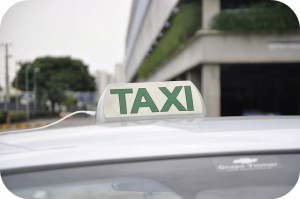 When Uber launched in 2009, its founders didn’t expect to revolutionize the car service industry. The company initially targeted a more upscale clientele by charging steep fees for its on-demand rides. As Uber expanded, however, its growing revenue allowed them to drop prices and offer their services to a broader base of consumers. Now valued at more than $60 billion, Uber has become a powerful competitor to taxis throughout the country as well as an increasingly credible alternative to car ownership.
When Uber launched in 2009, its founders didn’t expect to revolutionize the car service industry. The company initially targeted a more upscale clientele by charging steep fees for its on-demand rides. As Uber expanded, however, its growing revenue allowed them to drop prices and offer their services to a broader base of consumers. Now valued at more than $60 billion, Uber has become a powerful competitor to taxis throughout the country as well as an increasingly credible alternative to car ownership.
The success of this on-demand strategy inspired a slew of startups to apply Uber’s model to other industries. For instance, the valet service Luxe allows drivers to leave their cars in the care of smartphone-enabled attendants who park the vehicles in cheaper underused lots. Like Uber, this service can be both convenient and affordable for workers in cities with expensive parking rates. In the years since its founding, however, Luxe’s prices have steadily increased while its quality of service has dropped. According to experts, Luxe is just one of many companies that tried to emulate Uber only to discover that its strategy doesn’t quite translate to other industries.
A number of factors contributed to Uber’s success besides its business model. For starters, its service immediately appealed to a wide range of consumers who had been consistently let down by pricey and unfriendly taxicab companies. Those people then turned into repeat customers since most take a car every day. Uber-esque startups like Luxe simply don’t have those same market conditions to enjoy. And while they do receive similar interest from venture capitalists, even that apparent benefit has its drawbacks. Huge cash reserves allow startups to offer low prices and expanded services at the outset but those positions tend to reverse once the money runs out. That’s what happened to the “Uber for groceries” company Instacart: disappointing revenues led to a spike in prices along with wage reductions for some workers. Many of these startups are now rebranding themselves as “premium” services, exactly the opposite of Uber’s development as a company.
Questions:
- Will Uber eventually fall victim to its own business model as well?
- How did Uber’s market conditions lead to its success?
Source: Farhad Manjooo, “The Uber Model, It Turns Out, Doesn’t Translate,” The New York Times, March 23, 2016. Photo by Núcleo Editorial.
